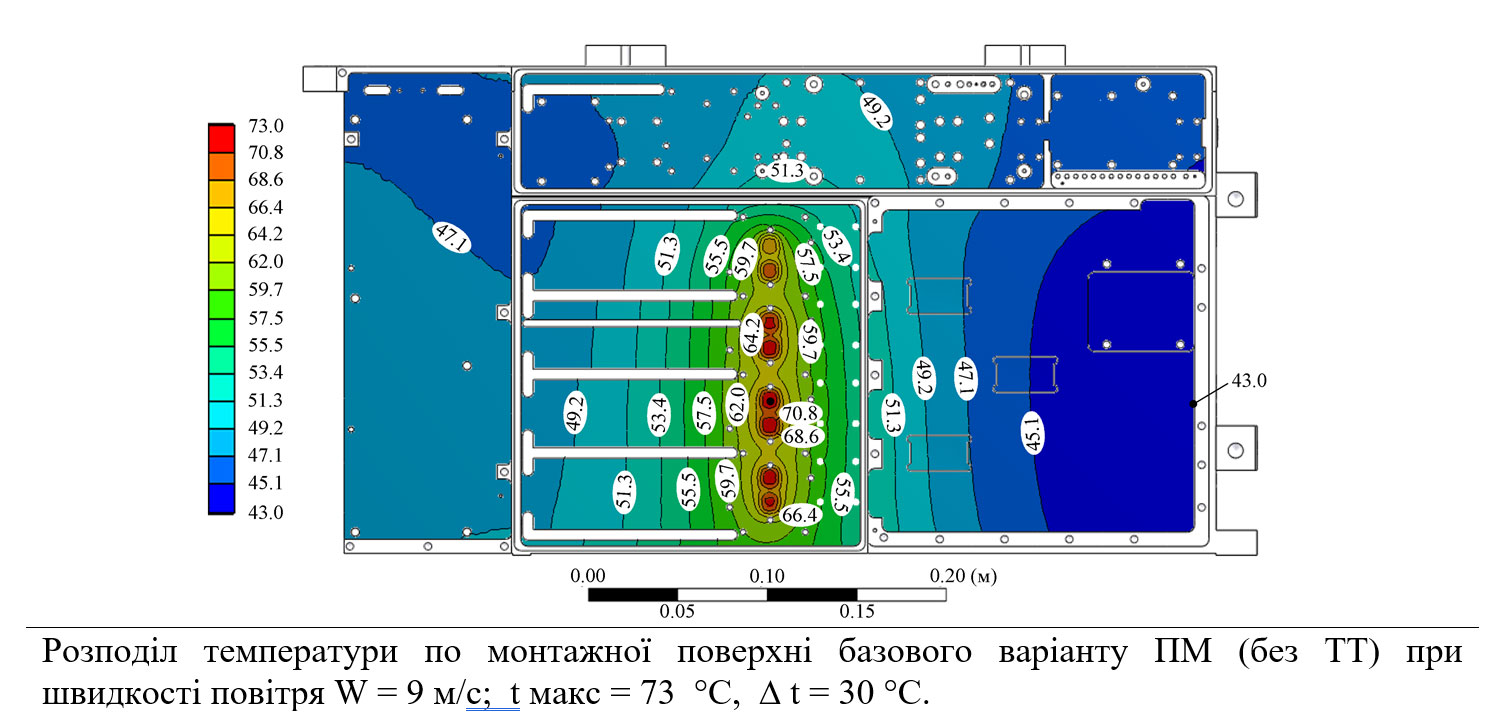Development and research of heat dissipation means from high power transmission modules for antenna systems of perspective radars.Development and research of heat dissipation means from high power transmission modules for antenna systems of perspective ra
About 70 to 75% of the energy consumed by the elements of transmit modules (TM) for active phased antenna arrays (APAA) is converted into heat. This heat, if dissipated inefficiently, can cause the element base to overheat, thus reducing the reliability of the radar. The task of ensuring the normal thermal regime of TMs for APAAs is complicated by the large-scale integration of electronic components inside the TMs. The transition toward a new, more high-power, element base leads to the fact that currently available air cooling systems cannot provide a normal thermal regime of the active elements of basic TM designs with convective heat exchangers and require new and more efficient heat dissipation methods to be developed.
In this work, we develop and study new devices for dissipation of heat from the active elements of TMs for APAAs. These new designs combine different types of heat transfer (evaporation-condensation and convective) in one TM casing. This allows local powerful heat fluxes to be dispersed from the active elements of the TM to a larger convective heat transfer surface without increasing the overall dimensions of the device. The proposed design also makes it possible to reduce the temperature in the places of installation of active elements to 20.3°C for the elements twice as powerful as those of basic TM designs.
The study allowed developing design documentation for the proposed heat transfer devices, manufacturing prototypes and performing computer and experimental simulation of their thermal characteristics in a wide range of element power, flow rate, cooling air temperature, and tilt angles to the horizon.
The obtained curves for the dependence of thermal characteristics of the combined convective heat exchanger with built-in heat pipes on the power of simulators of active TM elements and the flow rate of cooling air allowed developing an engineering calculation method and recommendations for using the obtained results.

| Attachment | Size |
|---|---|
| 594.46 KB |




